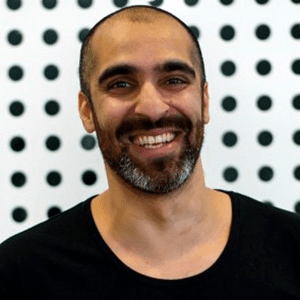

#25: Understanding blockchain – the technologies that have bought us so far can’t take us into the future
In this podcast we address a highly discussed topic within the business community, Blockchain technology. Matthew Le Merle is the co-founder and Managing Partner of Fifth Era which manages Blockchain Co-investors.
Matthew will answer some frequently asked questions: What would a digital economy look like? How could it change my business/investments/life? and How does this technology address the current challenges of the existing internet: Security, identity and trust?
Stephanie: Hello and welcome to TEC Live. Stephanie Christopher here, chief executive of The Executive Connection. TEC connects CEOs, executives, and business owners to the world’s largest business leader network. Our guest today is Matthew Le Merle, co-founder and managing partner of Fifth Era and of Keiretsu Capital, the most active early stage venture investors backing almost 200 companies a year.
Matthew is a manager of Blockchain Co-investors, the world’s leading blockchain venture fund of funds. He’s also chairman of CAH and Securitise in Europe, vice chairman of SFOX and an advisor at Warburg Pincus. Matthew was born in London and is now a dual US-UK citizen and lives in San Francisco and London with his wife, Allison Davis. Matthew, welcome to TEC Live.
Matthew: Great. I’m very happy to be here.
Stephanie: Thank you. So, tell me a little bit about co-invest.
Matthew: Co-investing?
Stephanie: Mm-hmm (affirmative).
Matthew: So, co-investing simply means that we take the opportunity to direct invest into the companies that we see through the funds that we’re investors in.
Stephanie: And you have a particular focus with your investment strategy, I understand.
Matthew: That’s right. My wife and I have been early stage Silicon Valley investors for more than 20 years, and historically we were internet and FinTech investors and today we add blockchain into that equation.
Stephanie: Okay, so that’s an interesting story in itself. Internet through to blockchain. Isn’t internet enough? Doesn’t the internet do everything that we could possibly need to do, now and in the future?
Matthew: Actually, that’s a great question, Stephanie, and I think lives have been changed by the internet over the last 20 years. I think there isn’t a business, an industry, a geography that hasn’t been changed very substantially. But the internet that we have today was created to be a communication platform, and TCPIP, the underlying protocol that enables the internet to operate, is a communication protocol. So, it turns out that the internet is actually not very good at doing commerce. Most of us assume that it is.
Stephanie: I buy things on the internet all the time.
Matthew: You do. But what actually happens is you communicate to, say, Amazon, Amazon communicates back, says you can, in fact, have that dress in salmon pink that you’re wearing, and they’ll tell you the price, and they’ll tell you when it will be delivered. They’ll ask you how you want to pay.
Stephanie: Yes.
Matthew: And from that moment on, the entire financial transaction is not any longer natively occurring on the internet. It’s occurring through traditional payment rails, payment processing and gateways, merchant acquirers, merchant issuers, your credit card and so on. So, the commercial transaction is not actually natively occurring within the internet. But I think, more fundamentally than just the issue that we don’t have digital monies and digital assets to support a digital world, we also have an internet that is fundamentally challenged.
Stephanie: In what way?
Matthew: It’s very insecure. You’ll read every day about cyber hacks, large companies losing their data. Most of us are being scammed and phished and taken advantage of every day today. And the bad guys are only right now figuring out how to apply technology to their scams. So, the rates of these challenges is growing very quickly.
The internet also has known no real embedded system of identity. I assume that it’s you I’m speaking to, and you assume that I sent the information that you received, but we never really know that with the internet because it wasn’t built to be a secure, high quality, trustworthy commerce environment. And it’s also become very concentrated, and you’ll read the EU talking a lot about this. The world’s largest companies, the most valuable ones, Amazon, Apple, Microsoft, Google, and so on, are dominating the internet of today, and a lot of people feel that we need to have a more decentralised approach.
Stephanie: So, when the internet was originally imagined and developed, you say as a communication tool, so email or what have you, is that what you mean?
Matthew: Not quite, but you can think along those lines. The internet that we have was created by scientists at places like CERN and Stanford and MIT and DARPA, to allow scientists to share data between themselves on wired, networked computer networks. There wasn’t an issue of trust. You were Stanford. I was MIT. We knew who was going to communicate with whom and we were sharing information, data and perspective and information. We weren’t trying to do transactions.
So, TCPIP, the protocol, was created to support that type of a communication flow, and it’s very powerful. Four to five billion people are communicating and sharing data and entertaining each other and communicating with each other globally. But the internet that we have is not really structured and created to support a true digital economy.
Stephanie: Where did the drive come, perhaps, for this? To see the gap and think, ‘Well, there needs to be some solution for commerce or for a true digital economy.’ Where did that come from?
Matthew: Well, actually, this is not a new thought. So Milton Friedman, the famous economist, 20 years ago said, ‘The only thing that’s wrong with the internet is we don’t have any electronic cash.’ I think that we’ve got by for a long time by using traditional payment means and financial means. But those things are not very good at doing a lot of the types of commerce that we’re now enabling with the internet. And so I’ll give you a couple of examples.
Stephanie: Yeah, that would be great.
Matthew: But most of our kids play video games. In video games, we create virtual currencies to allow the kids to buy and sell and grind away, and capture benefits and other things. But the reason we use virtual currencies is because the units of those transactions are tiny, micro transactions, and payment systems are too costly to support micro transactions.
A second example is the internet of things. We’re now beginning to take all of the world’s devices, the end point devices, which could be phones and computers, but it could also be thermostats and meters, and it could be cameras, and we’re connecting them together into a globally connected network. And we’re going to start trying to find ways of compensating micro-fragments of economic activity between these devices.
And again, our existing payment system can’t support these types of internet of things transactions. These are two examples. There’s many more, but it’s taken a while for us to appreciate that we need to move towards native digital monies, native digital assets, and we need to be able to do things faster, quicker, cheaper than we do today.
Stephanie: And so, native digital monies. Cryptocurrencies.
Matthew: Well, cryptocurrencies are examples of native digital monies, in the sense that they are built as digital monies, but they’re not the only types of digital money. And we can talk more about this later, but any form of money or any asset that is created to be natively digital is what I’m talking about. And that could be state backed, it could be central bank backed, it could be distributed or decentralised. I don’t hang them all under the phrase cryptocurrency because we tend to use the phrase cryptocurrency for the distributed, decentralised digital monies. We tend to use other names for, for example, central bank digital currencies, CBDCs. But broadly these are all sort of close cousins of each other.
Stephanie: What’s the next iteration? I’ve heard you talk about the second shoe dropping. This is the other shoe dropping.
Matthew: Yes.
Stephanie: So explain what you really mean by that and how significant this is going to be for us all in the future.
Matthew: Well, I think, for the people who are listening to this, assuming for a minute that they are owners of businesses or executives of businesses, or even investors in businesses, this is going to change their lives very significantly because, just as the internet, the communication internet, changed the way they interact with their suppliers and their customers and their employees, that it opened the door to electronic commerce and for many of the people it actually created enormous business opportunities. They were able to serve people they had never met and may never meet, and many people expanded the footprint of their businesses very enormously through the application of the internet.
So, as we begin to open up native digital monies and currencies, and enable real time, frictionless payments, and beyond just payments into motivation and incentive schemes, if you will, global loyalty programs and the like, then you have the ability to influence a much larger network of people in support of whatever your business is. And as I mentioned before, you are able to reach pockets of economic activity that, before, didn’t make sense.
And so just to use the example again, today, if you wanted to do micro transactions, you really can’t do that. So, just as an example, if you wanted to reward someone for leaving a message on your bulletin board, just to use that as an example, it’s not very easy to do that because you don’t want to give them very much, a couple of cents or something, a couple of pennies. And with a low cost transaction methodology, now you can. And so that changes everything, in a way.
We can start incentivising behaviours, encourage activities, reach people quicker and more cheaply. And we can take a lot of friction out. And this is just about monies. Now, if I talk about assets, it’s even more profound. And I know this is becoming a long answer, but more than half the world’s assets are paper-based. Most real estate, most funds, most private investments, a lot of fixed income is paper-based, where you and I might agree that I’m going to invest in your company, but you’ll ask me to sign a lot of paperwork. It will go through a lot of hands. It’s very inefficient. It takes a long time. There’s a lot of net loss in the process. All of that could be instantaneous, almost zero costs, digitally enabled if we had digital assets rather than paper-based assets. So this is going to be pretty profound in finance but also in all areas of commerce.
Stephanie: The term block chain is important here and relevant to what you’re saying. How does that fit in or enable, exactly, what you’re talking about?
Matthew: Yes, so a lot of what I’m talking about, I think, by now the audience will understand, is not really about technology. It’s about continuing to move towards a digital world where eight billion or more people are connected and communicating and conducting commerce instantaneously with each other.
In order for that to happen, we need to take the internet and the world that we already have and continue to evolve it forward. And it turns out that’s not easy. The technologies that brought us this far are creaking a little bit at the seams, as I already mentioned, around issues like security, identity and trust.
Now, in the middle of all of that, back 10 years or so ago, this anonymous figure called, Satoshi Nakamoto, we don’t know who that is, a man or a woman or a group, created this white paper to create a decentralised, distributed, secure money that wouldn’t be reliant on a government or a specific centralised issuer. And that’s Bitcoin.
Stephanie: Bitcoin. Yep.
Matthew: But the key breakthrough here was that they weren’t trying to fix the internet, but what they were trying to accomplish required the solving of many of the same challenges that we have to solve for the internet that we have today. They needed a high level of security. They needed a concept of identity. They needed to create a trust-based environment where the people interacting with each other didn’t know each other. They needed to solve the double spend problem, which is a very specific issue in economics.
And all of that was accomplished with the blockchain protocol that sits underneath Bitcoin, the Bitcoin blockchain. So, that is a conceptual breakthrough. And the other phrase that we use for it is distributed ledger technology. I don’t think we have to go too deep into the technology, if you will, but the important thing for the audience to understand is that Satoshi Nakamoto solved many of the challenges that we are confronted by in the internet, in the creation of Bitcoin. And it’s the blockchain technology that sits underneath Bitcoin that many of us are very excited by.
Stephanie: Can you tell us a bit more about that?
Matthew: Yes, yes. So I can, Stephanie.
Stephanie: Will you?
Matthew: I will tell you that there are very few people who could stand up and explain TCPIP in front of an audience, but many of them have built great businesses on top of the internet and electronic commerce. And I would say the same thing of this area. Well, I think for the people who are listening to this will benefit enormously from native digital monies and native digital assets and a more secure internet, but they don’t need to necessarily understand hash rates and Merkel routes and mining, and all of the other bits and pieces of distributed ledger.
Now, if they do want to understand those things, I think that at its most basic, this is a technology that allows a large number of people to collaborate with each other, to mutably see the actions of each other, and to create trust in the provenance of whatever the work is that they’re jointly doing.
That work could be passing money between them. It could be passing an item down a supply chain, it could be sharing something valuable and knowing that it’s real, and that it’s not being pirated. So there’s a lot of applications of the technology, but how the technology works, I don’t know that people really need to know any more than they need to know TCPIP.
Stephanie: Maybe that’s the key to this. Maybe that people come to blockchain thinking, ‘I need to understand all the elements of it.’ And it’s not necessarily that interesting to people. It’s understanding more the impact it’s going to have on me, my business, or indeed my life.
Matthew: Right.
Stephanie: So, as a consumer, is this going to have the same kind of impact on me that the internet has had on me, as a general lay person, or do I need to be involved in some sort of significant transactions for it to have an impact on me and my life?
Matthew: No, I actually think it will allow us to continue to have more and more impact on everyone’s lives in many different ways. I think that we take for granted that the internet that we have today and everything that we do today will always be with us. It’s actually, I think, quite feasible that if we don’t solve the problems of today’s internet, we’ll actually have less than we have today. And I think very few people contemplate that thought. If the internet gets even more insecure, if we get scammed and hacked and phished even more frequently, including by mainframe computers whirring away and hacking us instantaneously and continuously.
Stephanie: More systematised.
Matthew: Yes, exactly.
Stephanie: Yeah.
Matthew: And if the volume of fake news and content grows exponentially and we can’t trust anything we learn online, then I think we will end up with less than we have today. Not more. So this is very fundamental. Everyone relies upon the internet of today. We can’t imagine trying to find our way around Sydney without a map application, and the cars and the taxies that pick us up and drop us off wouldn’t operate today if we didn’t have those things. But those things are not yet secure and immutable, if you will.
So, my first point would be our lives, in order to simply stay the same, we’re going to have to solve the challenges of the internet today. And then, I think we’re unlocking a lot of new things. And I’ve tried to hint at some of those clear trust and immutability in our ability to know where things came from, what uses they were put to, who else touched them, the ability to transact cheaper, quicker, faster, the ability to invest in assets or sell assets in a truly digital format.
These are examples, the ability to unlock the internet of things and have endpoint devices that are compensated for their activity in new and micro ways. These are examples. There are lots of them that are being unlocked by this move towards digital assets and digital monies.
Stephanie: I think that’s really interesting, that angle that we take for granted, something that we enjoy working with. I mean, I remember working in an office when there was the internet computer, and you had to book time on it. And that seems ridiculous now. Businesses couldn’t work without it, so just even securing what we have, let alone continuing to advance, is really important to understand this or to acknowledge it.
Matthew: Yeah.
Stephanie: So, what do we need to do is, if I’m a mid sized business owner and clearly understand what’s going on, but what do I need to do to embrace the new iterations of the internet or where it should be going and to understand blockchain, what’s important for me to do at this point?
Matthew: Yes. It’s not always necessary to do anything, and you don’t have to be a leader in technology and most people shouldn’t try to be. I think that, in general, people do better in the future if they enter with a mindset that’s open to the future being different. Now, that’s actually a lot harder than it sounds. Most of us, in fact, all of us, are engineered to fear the unknown.
Stephanie: To justify my own present.
Matthew: Well that too. Yes. But our amygdala fears the unknown, and the future, by definition, is unknown. So, we tend to rely upon and drop back to the things we understand, and we become fearful if those are threatened. And so we tend to be asymmetrical. We don’t know the goods of the future, so we can’t appreciate them. But we fear the loss of the goods of today, and we get ourselves, as a result, in a mindset that we resist change.
Well, for small business owners, many of them are in a life and death struggle today, and so they don’t really need to worry too much about the future. They just need to do a really good job today of serving their customers and the customer needs and doing a thorough job of that.
However, the first point is try and have a mindset where you can think positively about the future, and you can be interested in trying to learn what other people are doing. Then seek out the people in the space in which you occupy the industry or the geography, who are trying to do new and different things, and see how they do it. And then ask the question, ‘Is this good for my customers and would this work in my business?’
I think that’s sort of the micro path and you don’t have to invest in going off to university and become a computer scientist or learning about Merkel roots and hash rates. You don’t need to know that. You need to just look for what’s someone else doing that I could do, too, and should I give it a go. And I think that those baby steps are, in big businesses and small, the way to really move in an innovative way.
Stephanie: That’s good. What will be the clues that this is starting to be available to me in my day to day business life? What will be the clues that I would need to look out for or be aware when this happens? Saying, ‘Okay, well this is that kind of change to the next iteration of the internet.’ Or, ‘This is my first interaction with the block chain.’
Matthew: Right.
Stephanie: What would I be looking for there?
Matthew: Hmm. I’m going to give you a specific example. I heard it yesterday, here in Sydney. I think it’s an interesting one. It’s a story of a 17-year-old. I won’t name the person’s name. He’s begun to carve out a place in electronic commerce, trading goods through Alibaba from China to Australia, and I’m sure many people have bought things electronically from these other sources.
A week ago, he said this virus could get worse. There might be a big run on face masks. He went online, he bought a couple of containers from China, and he’s having them shipped down here. Apparently they’re the last available face masks because paper face masks are sold out in China.
Stephanie: Yep.
Matthew: So, he may have just cornered the market, or at least got some containers of something that suddenly is going to be quite valuable. So I sort of asked, ‘Well, how did you do that?’ And of course most of it, any of us could have done, he went through Alibaba, he tracked down a supplier, found that they still had a few left and bought them up. But I also asked, ‘Well, how did you do the transaction?’ And he used Bitcoin. And he needed to move fast because everyone was hounding this person to get these last couple of container loads. And so he did an instantaneous transaction with Bitcoin, and that was the way he got his order in at the top of the queue.
It’s not a particularly profound example, but it’s the type of example you should be watching for. What are other people doing? If you’re a paper goods manufacturer, a pharmaceutical or chemist retailer in Sydney right now, you just missed an opportunity, potentially. And this young 17-year-old grabbed it from you. And why? Because, probably, a variety of reasons. He’s a millennial, he’s a digital native, he’s embracing the future now, he’s trying to figure out how these things can be put to good use. But I was pretty impressed because it never occurred to me that there’s a lot of money to be made by selling face masks, potentially. I know it’s not altogether a great story either. It’s definitely ambulance chasing, but that’s a micro example of what I’m trying to describe.
Stephanie: So, the clue could be, as a business owner, ‘I’ve missed out on something that, in my standard way of operating, I’d have a really good crack at. But I’ve missed out on it because someone’s done something differently, or someone’s done something in a new way. And that’s a clue, isn’t it? That yes, that I need to get my head around something different, then.
Matthew: Yeah. So Alison and I, Alison is my wife and co-author, we wrote a book on corporate innovation a few years back, and it’s sort of the lessons from Apple, Google, Microsoft, Facebook, and the world’s most innovative and most valuable companies. And in that book, when you boil it all down, the really innovative folks keep an eye on the customers and the needs that are not being met today. And they keep an eye on competitors and they get paranoid if competitors are doing anything better than them.
And that’s a very micro level conversation. You can be a small business person, but if you’re constantly worrying about, ‘Am I doing everything I can from my customers? Is my competitor down the block doing something better?’ And then if you layer on top of that, those two questions and, ‘Are there any innovations that they’re applying?’ It’s enough. You’ll probably be in the top quarter of whatever industry you’re in, if you just do those three things. What do my customers need, what are my competitors bringing to market that’s better than what I have, and is there any other innovation I might be able to apply here? Just those three questions is probably sufficient.
Stephanie: So Matthew, you’re an investor. How do you invest into this space?
Matthew: Allison and I have been in Silicon Valley 35 years. We’ve been early stage tech investors for at least 20, and today we have our own firm blockchain co-investors, which focuses on investing in the leading companies globally in this space. Today we’re investors in 10 of the 16 blockchain unicorns, and this is really our passion. It’s how we spend our time.
Stephanie: What’s a blockchain unicorn?
Matthew: Thanks for asking.
Stephanie: I’m glad you’re investing in them. Just clarify what they are.
Matthew: So, in Silicon Valley, a unicorn is a private company worth more than a billion us dollars. And so to be an investor in one is always a good thing, to be an investor in 10 makes us feel smug.
Stephanie: I love a smug guest. If anyone is interested in learning more specifically from you, or if they want to contact you, what would be the best way to do that, Matthew?
Matthew: We live a fairly public life, so people can go to our family office site, fifthera.com, or they can go to blockchaincoinvestors.com, and they’ll see Allison and I, and our contact details. And then here in Australia, all the books we’ve written are available everywhere. Amazon, Apple, paperback, hardback, ebook, Audible. So, we’re pretty easy to find more about our views on investing, innovation and blockchain.
Stephanie: That sounds great. So Matthew, you have made what potentially is extremely complicated and out of the reach of a normal person very simple. And I really like the way you brought it down to mindset because that’s the start of everything, and understanding your own business, understanding your customers, but having a view of where we’re heading. And there’s been so much change for all of us over the last 20 years. That there’s more change to come, that’s not necessarily a scary thing at all.
Matthew: They shouldn’t be.
Stephanie: No.
Matthew: And I think, first time, it is a challenge. I mean, a lot of people will remember the first time they took the ISPCD, or America online or whatever it was, and plugged it into their computer and they couldn’t figure out how to get it to load. Then they had to plug the cable into the wall and try and get a signal and it sounded weird, you didn’t know if it was working. And then slowly, something scrolled down the screen and you hung up halfway, and so on and so on.
And that was your first experience, but you did it once and it became easier the second and then third you went down the learning curve. Now, we’re logging in, real time, communication globally with our friends, video streaming, all these things. We’re using them. So, I actually don’t buy the thought that innovative technologies are not for everyone. I think it’s just people have to climb up the learning curve.
And if you will, the variance between the least capable human being and the most capable human being is not as much as we think. Most of these technologies any of us can use if we put our minds to it. We’ve all got roughly the same brain. The difference between a Nobel prize winner and an average person is not, percentage-wise, very much. And most of these technologies everyone can use.
Now, that doesn’t mean that we’re all going to invent new technologies. That’s a very unique skillset. But using the technology someone else has put in place for humans to use shouldn’t be beyond any of us.
Stephanie: So, Matthew, in equal parts practical and encouraging. Matthew Le Merle, thank you very much for your time.
Matthew: Thank you, Stephanie. I really enjoyed it.
Stephanie: So that’s TEC Live for today. CEOs are in the business of making decisions and leadership is the art of execution. I’m Stephanie Christopher, and look forward to talking to you next time.



